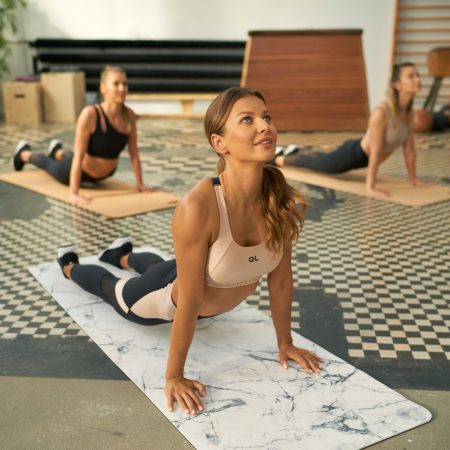
Sore Muscles After a Workout – what should you know?
Have you ever experienced sore muscles after training? When, suddenly, climbing up the stairs or putting on your shoes becomes a challenge. Was it like that when you took up sport, came back after a long break, or did a really hard workout? This pain is commonly referred to as “soreness”, but today I would like to dispel any inaccuracies related to this topic! You will learn what this pain is and how to deal with it. Let’s find out!
Muscle soreness – when does it happen?
Acidification of the body during training occurs as a result of an increase in the level of lactic acid in the muscles, the decomposition of which causes an increase in the amount of H + hydrogen ions and lactates. The acid-base homeostasis and the course of metabolic processes in the body are disturbed. Then you feel the pain of the trained muscle parts during the workout. This situation occurs when practicing physical activity based on anaerobic work, it is the so-called aerobic training.
What is aerobic training? During this kind of workout your heart rate is around 80-90% of your maximum rate. It can be a sprint run, tabata, HIIT workouts, powerlifting, or calisthenics.
Lactic acid breakdown products are removed within about 2 hours from the moment of completing physical activity, therefore they will not remain behind and manifest themselves in pain on the second or third day after training. So what is the cause of pain and discomfort after training?
DOMS – delayed onset muscle soreness
Previously mistakenly referred to as muscle fever, delayed muscle soreness is the cause of muscle pain and often problems with performing basic activities.
Contracted microdamage occurs in the muscle tissue after exercise, and inflammation comes right after that. Until the tissue regenerates, we feel the pain which may last up to 48-72 hours after the training. Everything really depends on your individual pain threshold and training advancement.
Some seek to get DOMS after a workout, while others avoid them as much as possible. Which group do you belong to? With time and as the condition improves, delayed onset muscle soreness becomes less and less frequent. It is the result of the adaptation of muscle tissue to training and loads.
I believe that it’s best to have a rational and healthy approach to practicing physical activity and we should avoid overloading the body during a training session. Remember that long-lasting muscle pain after training is associated with a longer break and, in fact, limitation of activity, even the daily one. I think it is worth paying attention at this point to the fact that leaving the comfort zone, performing a training that is a challenge for the body, causes progress, and isn’t that what we want? That is why it is worth having an action plan when doing sports, even recreationally. You can get it without leaving your home using my Diet & Training by Ann app, which you can find HERE.
Athletes, physiotherapists, trainers as well as people who do sport recreationally have their own proven ways to fight post-workout muscle pain. Below, I will show you ways not only to minimize pain sensations, but also ways to prevent their occurrence.

How to deal with DOMS?
- First of all – a warmup! You can read about the correct warm-up HERE. Proper muscle preparation is the first step to minimizing any pain after training. Don’t forget about it before each, even a short, training session.
- Exercise regularly with load individually tailored to your abilities. If you feel the need to do so, it is worth consulting your trainer. A training plan, planned gradual progress and time for regeneration are the way to success, without the need for forced time off.
- Healthy nutrition is the basis of a healthy body and lack of problems with regeneration. Make sure your diet is rich in antioxidants, limit or cut out stimulants. You will find the necessary information about antioxidants HERE.
- During the rest days, take care of some extra regeneration. Depending on your preferences and possibilities, you can have a massage session, sea salt bath, sauna, or alternating cold and warm showers at home.
- Stretching and muscle rolling are also recommended. Rolling can prevent and support faster pain relief after a training unit. You can read about all its advantages HERE.
I hope I have dispelled any doubts you might have had about muscle pain during and after training. Put all these tips into practice and enjoy your favorite sport without restrictions. I’ll see you on the mat 🙂
Bibliography:
- Cheung K, Hume PA, Maxwell L. Delayed onset Muscle Soreness. Sports Medicine. 2003; volume 33 s. 145-164.
- Jaskółka A, Bogucka M, Świstak R, Jaskólski A. Mechanisms, symptoms and after-effects of delayed muscle soreness (DOMS). Medicina Sportiva. 2002; 6 (4): 203-208.
- Kuligowski LA, Lephart SM, Giannantonio FP, Blanc RO. Effect of Whirlpool Therapy on the Signs and Symptoms of Delayed-Onset Muscle Soreness. J. Athl. Training 1998; 33(3): 222-228.









Comments No Comments
Join the discussion…